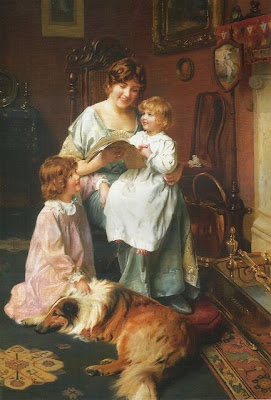“I enjoy the spring more than the autumn now.
One does, I think, as one gets older.”
Virginia Woolf, Jacob's Room
The wonderful season that we are living, the beauty of the painting and the musicality of the dance are combined in "Song of spring" by Maximilian Lenz.
Provate a mettere insieme la stagione che stiamo vivendo, la bellezza della pittura e la musicalità della danza. Dall'unione di queste forze nasce il meraviglioso dipinto "Song of spring" di Maximilian Lenz.
.jpeg) |
| "Song of Spring" by Maximilian Lenz |
Maximilian Lenz (4 October 1860, Vienna – 19 May 1948, Vienna) was an Austrian painter, graphic artist and sculptor. He was a great friend and intimate walking companion of Gustav Klimt. Lenz was a founding member of the Vienna Secession. He was a Symbolist, but later his work became increasingly naturalistic. He worked in a variety of media, including oils, watercolours, lithography and metal reliefs.
Maximilian Lenz (4 ottobre 1860 Vienna - 19 maggio 1948, Vienna) è stato un pittore e scultore austriaco. Fu grande ed intimo amico e compagno di passeggiate di Gustav Klimt. Lenz fu uno dei membri fondatori della Secessione viennese. Era un simbolista, ma in seguito il suo lavoro è divenne sempre più naturalistico.
In Song of Spring (1913) the dancers in their flowing white dresses float through warm spring breezes in a ritual celebration that is as old as mankind. They personify the season of birth, youth and the dawn of a new day, calling to mind the freeform dance and costume of Isadora Duncan the American dancer, considered one of the most significant precursors of so-called "modern dance" who lived in Western Europe and the Soviet Union from the age of 22 until her death at age 50 (1877 – 1927).
Nel dipinto Song of Spring (1913) le giovani danzatrici indossano abiti bianchi fluttuanti nella calda brezza primaverile in una celebrazione rituale antica e mistica. Esse rievocano la stagione di nascita, la gioventù e l'alba di un nuovo giorno, richiamando alla mente il ballo a forma libera e i costume di Isadora Duncan (1877 – 1927), la danzatrice statunitense, considerata una tra le più significative precorritrici della cosiddetta "danza moderna"che visse in Europa tra la fine dell'ottocento e gli inizi del novecento.
 |
| Isadora Duncan |
Isadora took inspiration from ancient Greece and combined it with an American love of freedom. Isadora's dance represented liberation, transcendence, sensuality and the cosmos. She wore a revolutionary costume of a white Grecian tunic and bare feet. She was very inspired by ancient Greek art and utilized some of those forms in her movement.
La danza di Isadora univa l'amore per la Grecia antica e il desiderio americano di libertà. Il suo era un ballo di liberazione, di trascendenza di sensualità e di ritmo cosmico. Ella indossava un semplice costume realizzato con una tunica bianca e ballava a piedi nudi. I suoi movimenti erano ispirate dalle forme classiche.
Isadora defined her movement through natural and spiritual laws, her breathing technique on the ebb and flow of ocean waves and her costume on the virginal dresses of the Middle Ages. In her performances, she leaped and skipped over the stage, just as Lenz's women run carefree over new spring grass.
I movimenti di Isadora seguivano leggi naturali e spirituali. La sua tecnica di respirazione seguiva il flusso e riflusso delle onde del mare e il suo costume rappresentava abiti virginali del Medioevo. Nelle sue performance, danzava sul palco proprio come le donne di Lenz corrono spensierati sull'erba di primavera.





.jpg)









